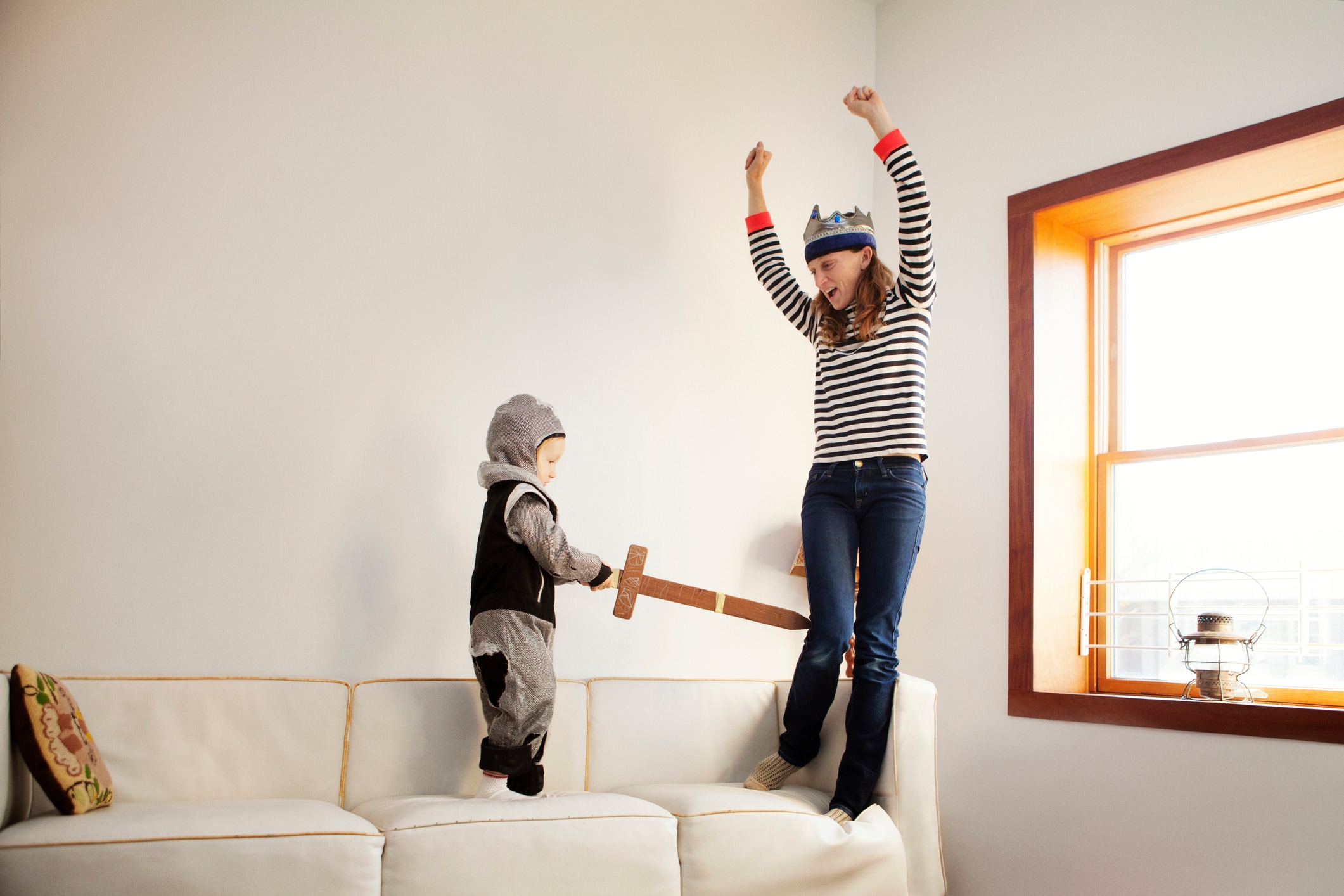Small design choices can make a big difference in not only how someone navigates their home, but also how they feel when they are in it. That’s something that wheelchair user Yvette Pegues, chief executive officer of Your Invisible Disability Group and board member at The Arc, knows firsthand.
“An accessible bedroom isn’t just about space — it’s about independence, comfort and dignity,” Pegues explains. “For adults with disabilities, it means removing barriers and creating a setup that allows us to move freely, reach essentials easily and rest safely. It’s about designing a room that adapts to the person, not the other way around.”
From thoughtful layouts to smart technology, we spoke with experts to help you design a bedroom with intention in order to make it accessible for disabled adults.
Key takeaways
- An accessible bedroom isn’t a luxury for adults with disabilities; it’s a necessity that impacts safety, mobility and overall well-being.
- Technology is making it easier than ever to create accessible living environments that promote independence while providing essential support.
- Accessibility improvements don’t always require buying new furniture; simple home modifications can also enhance comfort and independence.
7 steps for making a bedroom accessible for adults with disabilities: A checklist
Whether an individual has a physical disability, limited mobility or cognitive challenges, here is how to ensure their bedroom promotes independence while providing essential support:
1. Create open pathways free of clutter and tripping hazards
Safety is the top priority when it comes to making a bedroom accessible for adults with disabilities. “To maximize home safety, my recommendation is to first address any potential hazards that could lead to falls,” explains Jessica Corona-Irwin, a registered nurse, certified dementia practitioner and Head of Nursing at Remo Health. Here are the steps she recommends:
- Rearrange furniture to create wider walkways to improve mobility.
- Keep floors clear of small furniture and decorative items.
- Make sure any unnecessary clutter is stored on shelves or in drawers.
- Remove carpets and floor coverings that are not secured to the floor.
- If rugs are needed, use only non-slip designs.
Install grab bars and safety hardware to existing bedroom features
It’s important to make an environment as safe as possible while still prioritizing comfort and personal design choices, explains Kim Keane, director of program development for Noah Homes, a community designed for adults with disabilities. This is when safety equipment can come in handy. For example, for individuals with memory loss, installing safety latches on furniture and being mindful of sharp edges on nightstands and dressers is key to prevent injuries if the room layout has changed, Keane says. Additionally, if the bedroom has a bathroom, showers should be equipped with anti-slip mats, grab bars and a shower seat if necessary.
2. Measure the height of your furniture and adjust if needed
The goal of adjusting the height of bedroom furniture is to ensure a person can comfortably reach items, as well as transfer easily from laying or sitting to standing. “Beds should be level with a seated position for easy transfer — usually 20-23 inches high,” says Pegues, who uses both adjustable and lower-height furniture in her bedroom. “Nightstands should match bed height, and dressers should allow seated access without awkward stretching.”
3. Ensure the bedroom is properly lit, especially at night
Installing effective and accessible lighting is crucial for lowering fall risks at night. Pegues recommends motion-activated or smart lights. “My bed lights up at the bottom every time it senses me getting in or out of it and stays on for about five to 10 minutes,” she says.
4. Streamline layout to optimize organization
For adults with intellectual and developmental disabilities (IDD), cognitive impairments can affect their ability to complete instrumental activities of daily living, (IADLs), including managing money, medications and organizing tasks. “As such, structure is key,” Pegues says. “Labeling drawers, lots of color-coded storage and routine-friendly layouts help me greatly.”
“Inclusive spaces are about choice and flexibility. Universal designs don’t just help disabled people; they make life easier for everyone in our multi-ability home. That’s real inclusion!”
— Yvette Pegues, executive and disability advocate
5. Enlist the help of automated or smart home devices
Pegues has discovered that voice-controlled systems can turn any room into a custom space. “Technology that helps adjust lighting, temperature and even call for help is cost-effective and common,” Pegues says. Here are a few smart home devices experts recommend in particular:
- Voice-activated assistants (like Amazon Alexa or Google Home) for hands-free control of lights, thermostats and even reminders for medication or appointments.
- Smart door locks and video doorbells to enhance security while allowing people to see and communicate with visitors without needing to get up.
- Automated lighting and motorized blinds will reduce the need to navigate spaces in the dark or manually adjust window coverings.
Along with making a big difference in accessibility for adults with cognitive and physical impairments, smart home devices can also support caregivers, Corona-Irwin adds. “Smart sensors that detect motion or inactivity can provide peace of mind for caregivers by alerting them to potential falls or emergencies,” Corona-Irwin says. “Additionally, wearable devices and emergency alert systems ensure help is always within reach.”
6. Consider additional modifications for adults with dementia
As dementia progresses, there are common behaviors that can develop and impact one’s health and safety. “Every individual experiences dementia differently so observing their reactions and making thoughtful modifications can make a meaningful difference in their daily comfort and well-being,” says Corona-Irwin. If you notice these bedroom features are causing distress for your loved one, consider making the following simple adjustments:
Cover or remove mirrors
“For people living with dementia, mirrors can sometimes become a source of distress,” Corona-Irwin says. “This is often due to a loss of self-recognition, which can be especially pronounced in the later stages of the disease.”
Replace dark rugs with lighter, more uniform flooring
Similarly, dark carpets or area rugs can also cause distress. “People living with dementia may misinterpret these dark patches as holes in the floor, making them hesitant to walk over them or even fearful of falling,” Corona-Irwin says. “This visual misperception can increase anxiety and affect their confidence in moving around their home safely.”
Maximize natural lighting
For adults with memory loss, natural lighting provided by windows or skylights can reduce confusion and help with sundowning, or extra confusion that can occur last in the day and evening hours, Keane says.
7. Explore investing in disability-friendly furniture
Disability-friendly furniture is specifically designed to make daily activities easier and more comfortable for people who have physical, cognitive or sensory impairments to make daily activities easier and more comfortable. Examples include:
- Adjustable-height desks
- Ergonomic chairs with lumbar support
- Lift-assist recliners
- Beds with adjustable bases
But it’s important to note that accessibility improvements don’t always require buying new furniture. “Rearranging furniture to create wider walkways can improve mobility just as effectively,” explains Corona-Irwin. Beds with adjustable bases are also great, she adds, but adding bed risers or installing grab bars nearby can provide similar support at a lower cost.
A final word on creating inclusive spaces and universal design
While some bedroom modifications may specifically cater to the needs a disabled adult to aid safety, comfort and independence, experts remind caregivers that there is no one-size-fits-all solution for designing an inclusive home. That’s where the importance of universal design, or the process of designing spaces that meet the entire family’s needs, comes in.
“Inclusive spaces are about choice and flexibility,” Pegues says. “As the only wheelchair user in my home, I know the best spaces are the ones that work for everyone without requiring special accommodations… Universal designs don’t just help disabled people; they make life easier for everyone in our multi-ability home. That’s real inclusion!”





